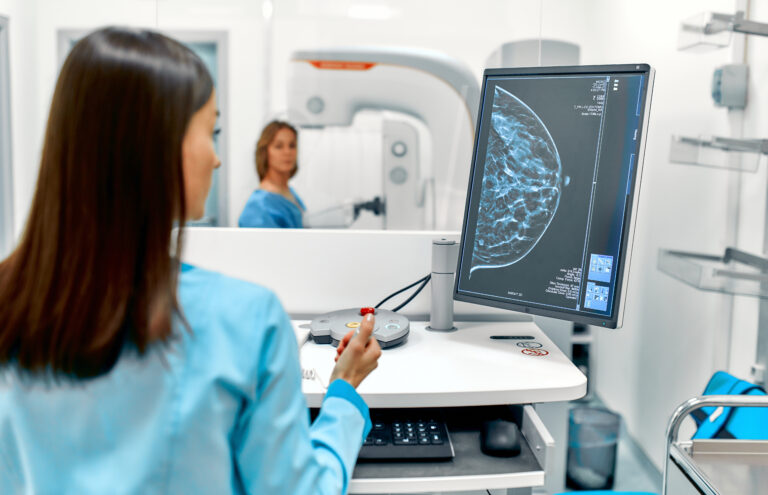For a patient, the difference between a benign vs. malignant tumor is the difference between relief or fear. A benign tumor is not cancerous. A malignant tumor is cancerous and possibly life-threatening. When patients find lumps in their bodies, it is imperative to determine whether the growth is benign or malignant as soon as possible. Pathologists play a crucial role in tumor diagnosis.
Benign vs. Malignant Tumor: Similarities
Tumors, or neoplasms, consist of abnormal masses of tissue. These masses form because cells do not die off as they should, or the cells proliferate and divide more than they should. Both benign and malignant tumors may develop virtually anywhere in the body . They vary in size from extremely small to a large mass.
Benign vs. Malignant Tumor: Differences
Benign tumors do not spread. Malignant tumors do spread, or metastasize. Even though a benign tumor may grow to a considerable size and cause discomfort, it stays at its original location. There are situations in which a benign tumor becomes dangerous, as when it presses on a vital organ. Benign tumors in the endocrine system may trigger hormone overproduction.
Via the bloodstream or the lymphatic system, malignant tumor cells travel to distant areas of the body. Distant metastases are most often found in the bone, brain, liver or lungs. A woman with metastatic breast cancer, for example, may have breast cancer cells that travel to the bones. She does not have bone cancer, even though her bones are affected. The cancer cells causing the damage did not originate in the bones but traveled from the breast. Thus, the breast cancer is primary and the bone cancer is secondary.
There are circumstances under which benign tumors can become malignant. For instance, colon polyps, generally removed during colonoscopy, are benign but can become malignant. Growths in which there is potential for cancer to develop as known as premalignant tumors.
Benign tumor characteristics:
- Distinct borders
- Slow growth rate
- Non-invasive
- Unlikely to return after removal
Types of benign tumors:
- Adenomas – located on an organ or gland
- Fibroid – found in fibrous tissue. Most common in the skin, mouth, and uterus
- Hemangioma – growing from blood vessels
- Lipomas – forming from fat cells. The most common type of benign tumor
- Neuroma – developing within nerves
- Osteoma – forming from bone
Characteristics of malignant tumors:
- Irregular borders
- Rapid growth
- Invasion of nearby tissue
- May recur after removal
Types of malignant tumors:
- Carcinoma – starting in the skin or tissue lining of organs
- Leukemia – starting in the bone marrow cells and affecting white blood cells
- Lymphoma – cancers of lymphocytes, a white blood cell in the immune system
- Sarcoma – originating in the connective tissue
Tumor Development
Normally, genes tell cells when to grow and divide. One cell forms two cells. Two cells form four cells, and so on. Cells are programmed to eventually die off.
Due to gene mutations, tumor cells do not follow this pattern. Instead, they grow out of control or do not die as designed. This abnormal division results in the development and growth of a tumor. Benign tumors do not contain cancerous cells . The cells of malignant tumors are cancerous.
Tumor Development Causes
Tumor development is caused by various factors. These include:
- DNA damage
- Viruses
- Radiation exposure
- Exposure to carcinogens – cancer-causing chemicals
Tumor Treatment
Benign tumors may require surgical removal, and malignant tumors do require surgical removal.
Once a pathologist determines that a tumor is benign vs. malignant, treatment options differ dramatically. Benign tumors usually do not need further treatment. Malignant tumors may require chemotherapy, radiation, immunotherapy and other methods of fighting cancer.
Are Tumors Preventable?
While there is no surefire way to prevent tumor development, there are measures you can take to reduce your risk. Not using tobacco products or drinking alcohol excessively can lower the odds of developing certain malignancies. So can staying fit, consuming a healthy diet and maintaining a normal weight. Protect your skin from melanoma and other dermal cancers by avoiding the sun in the heat of the day and always wearing sunscreen.
Certain cancers are caused by viruses. There are vaccinations available against these viral infections. One such example is the human papillomavirus (HPV) responsible for cervical cancer.
If you have a family history of cancer, discuss undergoing genetic testing with your doctor. Patients with certain genetic mutations, such as the BRCA gene mutation, have a higher risk of tumor development. Some women with this mutation opt for a prophylactic mastectomy or ovariectomy to prevent breast or ovarian cancer.
Contact Us
For more than 70 years, Yosemite Pathology and Precision Pathology has advanced anatomic pathology in the Western United States. Today, our practice encompasses more than 20 board-certified anatomic pathology specialists. Our broad range of specialties includes breast, gynecologic, hematology, thyroid, urologic and other pathologies. For more information about our services, contact us today.
Jane Meggitt’s work has appeared in dozens of publications including USA Today, Zack’s, Financial Advisor, nj.com, The Houston Chronicle and The Nest. She is a graduate of New York University.
Sources
Cleveland Clinic — Benign Tumor:
JAMA Oncology — Benign vs Malignant Tumors
Medline Plus — Benign Tumors
National Cancer Institute — What Is Cancer?
Centers for Disease Control and Prevention (CDC) — BRCA Gene Mutations

